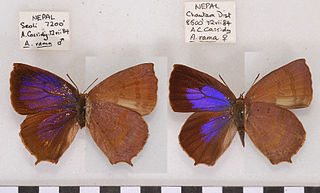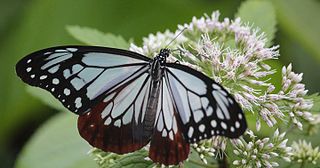 W
WThe following is a list of beetles of subfamily Paussinae of the family Carabidae of Nepal. Sixteen different species are listed.
 W
WThe following is a list of butterflies of Nepal. Six hundred and seventy-six species and thirty subspecies are listed.
 W
WThe following is a list of Bombycidae of Nepal. Fifteen different species are listed.
 W
WThe following is a list of Brahmaeidae of Nepal. Only two different species are known.
 W
WThe following is a list of Drepanidae of Nepal. Sixty different species are listed.
 W
WThe following is a list of Eupterotidae of Nepal. Fourteen different species are listed.
 W
WThe following is a list of Lasiocampidae of Nepal. Fifty-six different species are listed.
 W
WThe following is a list of Limacodidae of Nepal. Fifty-seven different species are listed.
 W
WThe following is a list of Saturniidae of Nepal. Twenty-three different species are listed.
 W
WThe following is a list of Sphingidae of Nepal. One-hundred and twenty-nine different species are listed.
 W
WThe following is a list of moths of the family Uraniidae of Nepal. Twenty-three different species are listed.
 W
WThe following is a list of Zygaenidae of Nepal. Thirty-seven different species are listed.
 W
WAglais caschmirensis, the Indian tortoiseshell, is a species of nymphalid butterfly found in the northern regions of the Indian subcontinent, primarily in the Himalayas.
 W
WAmata perixanthia is a moth of the family Erebidae first described by George Hampson in 1898. It is found in Taiwan, Tibet and eastern China.
 W
WAreas galactina is a moth of the family Erebidae. It was described by Jan van der Hoeven in 1840. It is found in China, Taiwan, the north-western Himalayas, India, Nepal, Bhutan, Bangladesh, Indochina, the Philippines, Indonesia and Sundaland.
 W
WArhopala dodonaea, the pale Himalayan oakblue, is a small butterfly found in India that belongs to the lycaenids or blues family.
 W
WArhopala rama, the dark Himalayan oakblue, is a small butterfly found in India, Indochina, China and Japan that belongs to the lycaenids or blues family.
 W
WAthyma jina, the Bhutan sergeant, is a species of nymphalid butterfly found in tropical and subtropical Asia.
 W
WAthyma opalina, the Himalayan sergeant, is a species of nymphalid butterfly found in tropical and subtropical Asia.
 W
WAthyma zeroca, the small staff sergeant, is a species of nymphalid butterfly found in tropical and subtropical Asia.
 W
WTeinopalpus imperialis, the Kaiser-i-Hind, is a rare species of swallowtail butterfly found from Nepal and north India east to north Vietnam. The common name literally means "emperor of India". The Kaiser-i-Hind is much sought after by butterfly collectors for its beauty and rarity. The green iridescence of the wings has been found to be due to three-dimensional photonic structure of the scales and is the subject of much research.
 W
WParantica aglea, the glassy tiger, is a butterfly found in Indomalayan realm that belongs to the crows and tigers, that is, the danaid group of the brush-footed butterflies family.
 W
WParantica melaneus, the chocolate tiger, is a butterfly found in Asia that belongs to the crows and tigers, that is, the danaid group of the brush-footed butterflies family.
 W
WParantica sita, the chestnut tiger, is a butterfly found in Asia that belongs to the crows and tigers, that is, the danaid group of the brush-footed butterflies family.
 W
WSouth Asia is considered to include seven regions/countries. The lists of butterflies found in each individual country are given on these pages:List of butterflies of India List of butterflies of Pakistan List of butterflies of Bangladesh List of butterflies of Bhutan List of butterflies of Sri Lanka List of butterflies of Nepal List of butterflies of the Maldives
 W
WTeinopalpus aureus, the golden Kaiser-i-Hind, is a species of butterfly in the family Papilionidae. It is found in China and possibly Vietnam. Considered an endangered species threatened by the wildlife trade, it is protected by Chinese law.
 W
WTeinopalpus imperialis, the Kaiser-i-Hind, is a rare species of swallowtail butterfly found from Nepal and north India east to north Vietnam. The common name literally means "emperor of India". The Kaiser-i-Hind is much sought after by butterfly collectors for its beauty and rarity. The green iridescence of the wings has been found to be due to three-dimensional photonic structure of the scales and is the subject of much research.